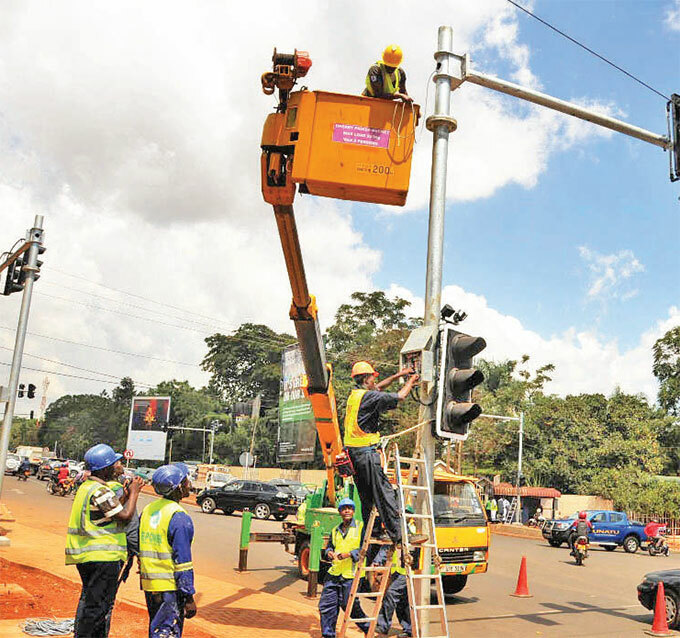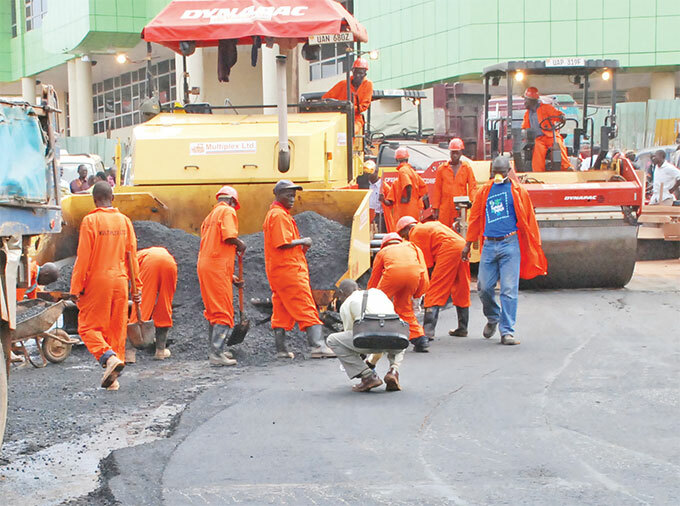Kampala to recover its lost glory, says KCCA
Under the Kampala Institutional Infrastructure Development Programme II (KIIPD II), KCCA in July handed over a number of roads for construction to contractors.
PHOTO: Kampala City
Over the last eight or so years, Kampala has been on a journey towards becoming one of Africa's leading cities.According to Eng. Andrew Kitaka, the acting executive director of Kampala Capital City Authority (KCCA), the current transformation has been possible with support from European Union, World Bank and the Japanese International Corporation Agency (JICA), among others.
In a recent interview, Kitaka said KCCA had planted over 10,000 trees and about 4,500 square metres of green and open spaces have been improved. The city launched the Kampala Climate Change Strategy and is undertaking a tree audit in the city.
With support from the European Union, Kitaka said KCCA plans to plant more trees under the Climate Change Project in the neighbourhoods of Nakasero, Kololo, Makerere and Mulago. "This will ensure that these areas have well-planned housing and public facilities," he said.
Roads
According to Kitaka, over 210km of roads have been upgraded with over 500km of gravel roads maintained. Kitaka said 48 roads with a total length of 54.15km are under construction and will be completed by December.
Under the Kampala Institutional Infrastructure Development Programme II (KIIPD II), KCCA in July handed over a number of roads for construction to contractors.

Installation of traffic lights at one of the junctions in Kampala
They include Lukuli-Nanganda, Kabuusu-Kitebi-Bunmwaya-Lweza Nakawa-Ntinda, Kulambiro Ring road and John Babiiha (Acacia) Avenue, among others. With the support of the World Bank, KCCA has also reconstructed and upgraded several roads to dual carriage.
These include Makerere Hill Road, Kiira Road, Mambule Road, Bakuli-Kasubi road, among others.This month, Kitaka explained that KCCA is expected to start signalisation of 30 junctions in the city using a grant from Japan through JICA.
According to KCCA, 75% of the city population walks to work, home, markets and other places. Despite this the city has not done enough to make provision for pedestrians and cyclists.In 2017, KCCA implemented the Non-Motorised Transport System Project (NMTS) along selected roads to provide safe walkways and cycling lanes.
He said the aim of NMTS is to link busy downtown to the proposed Bus Rapid Transport (BRT) Pilot Corridor which will have 40 and above seater buses as a opposed to current 14-seater mini-bus taxis.
Floods
To address flooding in the city, KCCA completed the drainage masterplan.
With support from World Bank, KCCA plans to work on the Nakamiro and Lubigi drainage channels. Over 169km of drainage are maintained each year. Over the last one year, KCCA reconstructed 23km of community drains.Street lights About 4,988 streetlights have been installed.
A total of 1,560 are solar-powered. KCCA has also installed responsive functional traffic signals at 21 junctions.
Property identification
Kitaka revealed that under the City Address Model and Computer Aided mass Valuation, 88,579 properties have been numbered in Central and Nakawa divisions.
Also, 585 house plates were installed and 2,599 street signage faces have been installed on 1,742 road sites and 360 roads have been named in seven parishes in Kawempe division.According to Kitaka, KCCA has completed valuation of 17,029 properties in Central division and 64,000 in Nakawa, which are on a ratable value of sh350b and annual property tax.
All of these properties are geographically referenced and digitally assigned property numbers.In terms of value, KCCA assets increased from sh45b (2011) to sh549b (June 2017). KCCA is also currently rolling out the use of Geographical Information System as one to support planning, visualisation in creating a city and for promoting economic development.

Construction of one of the roads in downtown Kampala. There has been a major improvement in road infrastructure
Garbage collection
KCCA has registered an increase in garbage collection from 30 to 1,360 tonnes a day. The institution acquired 14 garbage trucks and constructed a plastic and waste recycling plant under the Lake Victoria Environment Management Project. The authority renewed contracts of the three private firms to collect and transport garbage to Kitezi landfill.
It also procured 135 acres of land for a new landfill in Dundu, Wakiso district.
Markets
Wandegeya market which was completed to accommodate 1,200 vendors currently has vendor occupancy of over 60%.
Usafi market was also acquired for traders that were transacting business in non-gazzetted areas downtown Kampala. n A three-level market in Busega is being constructed to provide 2,000 work-spaces to the community.
Youth employment
To address the challenge of youth unemployment, KCCA has set up an employment service bureau that has registered over 14,000 graduates. Over 4,000 youth have been trained and acquired ICT, life and social skills. Some 600 job seekers were connected to employment through the bureau.
The bureau has a National Job Matching Database tool used to pair job applicants with companies.Several community support programmes have also been put in place with funding from the government where community groups get loans as startup capital. Over sh7b has been disbursed, benefiting over 3,000 youth.